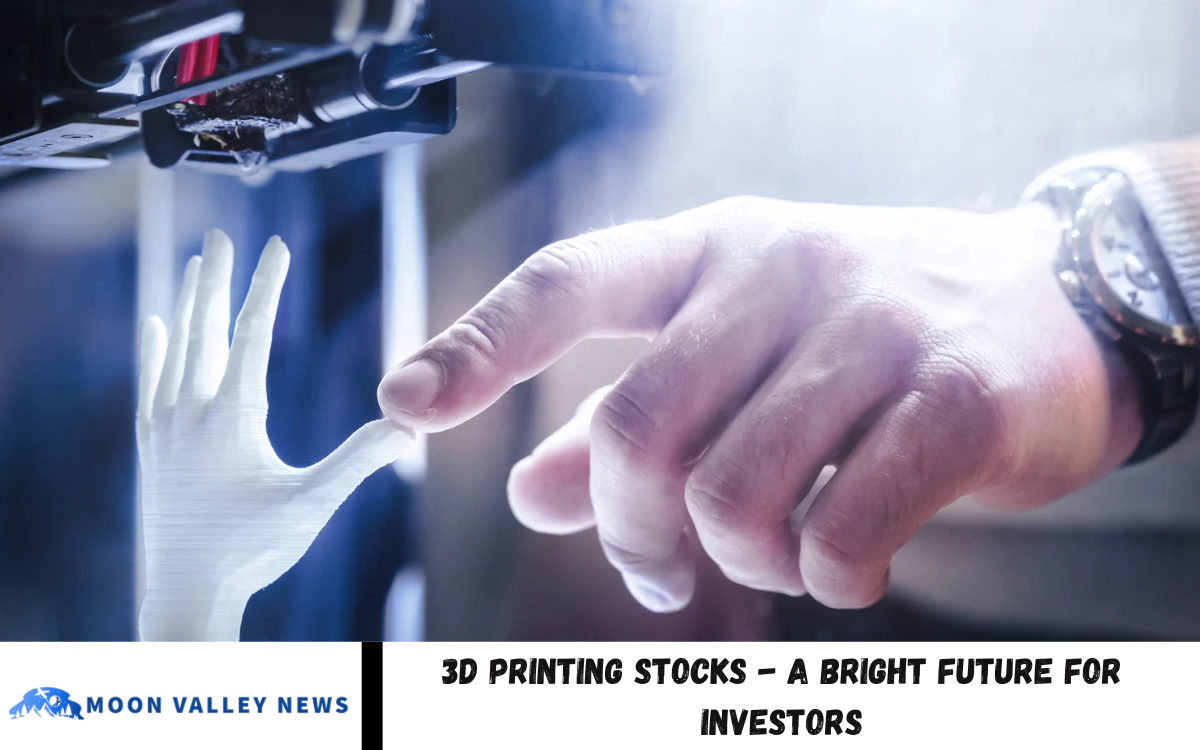3D Printing, also known as additive manufacturing, is revolutionizing the way products are designed, developed, and produced. This innovative technology builds objects layer by layer from digital models, making them faster, more flexible, and often more cost-effective than traditional manufacturing methods, from creating everything from airplane parts to custom prosthetics.
As the printing solutions for 3D printing stocks, these include companies that manufacture 3D printers, supply printing materials, or provide 3D printing services. Some of the leading players in this space include Stratasys, 3D Systems, and Desktop Metal, while giants like HP and General Electric also have growing 3D printing divisions.
Investing in 3D printing stocks provides an opportunity to be part of a rapidly evolving industry with immense future potential. However, like any emerging technology, it also comes with risks due to market volatility and competition. For investors who believe in the long-term promise of innovation, 3D printing stocks may be a worthwhile consideration as part of a diversified portfolio.
What Are 3D Printing Stocks?
3D printing stocks refer to shares of companies that are involved in the development, production, or support of 3D printing technology. Also known as additive manufacturing, 3D Printing creates physical objects from digital designs by adding material layer by layer. This Printing process is being utilized in various industries, including healthcare, aerospace, automotive, fashion, and construction.
Companies in the 3D printing space may specialize in:
- Making 3D printers (e.g., industrial or desktop machines)
- Producing printing materials like plastic, metal, or resin
- Offering 3D printing services to businesses and consumers
- Developing software for 3D design and printing processes
When you invest in 3D printing stocks, you’re buying a stake in a company that stands. Some well-known names in the sector include Stratasys, 3D Systems, and Desktop Metal, while larger tech companies like HP and General Electric have also entered the space.
Why 3D Printing Is a Game-Changer in Manufacturing?
3D Printing is transforming the manufacturing world by enabling faster, more flexible, and cost-effective production solutions. Unlike traditional manufacturing, which often involves cutting or molding materials, 3D Printing builds objects layer by layer from a digital design. This shift in approach opens up ePrintingnew possibilities across many industries.
One significant advantage is customization. With 3D Printing, companies can create tailor-made products without the need for expensive molds or retouching. This is especially useful in healthcare (such as custom prosthetics) and fashion (like personalized footwear).
Another key benefit is reduced waste. Traditional manufacturing often involves cutting away excess material, but 3D Printing uses only what is needed—making it more sustainable and efficient.
Read Also: Thejavasea.me Leaks AIO-TLP287 – Everything You Need to Know
Key Industries DrivPrintingrinting Growth
3D Printing is no longer limited to prototypes and hobby projects—it’s now powering real-world appPrintings across major industries. Here are the key sectors driving the growth of 3D Printing:
Healthcare
3D Printing is revolutionizing medicine with custom prosthetics, dental implants, surgical tools, and Printing bio-printed tissues. Personalized healthcare solutions are now faster and more affordable, improving patient care and treatment precision.
Aerospace & Defense
This industry benefits from 3D Printing’s ability to create lightweight yet durable parts. Complex components for aircraft and Printing can be produced with less material waste and lower production costs.
Automotive
Car manufacturers use 3D Printing for rapid prototyping, spare parts, and even final production components. It helps speed printing cycles and reduces time-to-market for new models.
Consumer Goods
From eyewear to footwear, 3D Printing enables mass customization and on-demand manufacturing. Brands are using it to offer printed products while minimizing inventory costs.
Construction
Large-scale 3D printers are being utilized to construct houses, bridges, and other types of infrastructure. It reduces construction time, labor costs, and environmental impact.
Education & Research
Universities and research institutions use 3D Printing for experimentation, model-making, and innovation across various disciplines.
These imprinting are not only adopting 3D Printing but also pushing the boundaries of what’s possible—fueling the technology’s global groPrinting 3D Printing Companies to Watch
As 3D Printing continues to expand across industries, several companies stand out for their innovation, presence, and growth potential. Here are some of the top 3D printing companies to keep an eye on:
Stratasys Ltd. (SSYS)
A pioneer in 3D Printing, Stratasys is recognized for its reliable printers and solutions serving industries such as aerospace, automotive, healthcare, and education. Its focus on industrial-grade Printing and strong customer base make it a key player in the sector.
3D Systems Corporation (DPrintingof, is the oldest company in the industry. 3D Systems offers printers, materials, and software for both industrial and medical applications. It’s widely recognized for its innovation in metal and plastic printing.
Desktop Metal, Inc. (DM)
Specializing in metal 3D printing, Desktop Metal is making waves with its high-speed systems designed for mass production. The company targets large-scale industrial use, spanning the automotive and aerospace sectors.
Materialise NV (MTLS)
Based in Belgium, Materialise focuses on 3D printing software and services rather than hardware. It’s a leader in healthcare and medical applications, offering tools that support surgical planning and the creation of custom implants.
HP Inc. (HPQ)
A household tech name, HP entered the 3D printing space with its Multi Jet Fusion technology. It brings strong R&D capabilities and aims to compete in industrial and commercial segments.
Proto Labs, Inc. (PRLB)
While not solely a 3D printing company, Proto Labs offers on-demand manufacturing, including 3D Printing, CNC machining, and injection molding. Its quick-turn production is popular with engineers and startups.
Established players and innovative newcomers. Whether you’re an investor or simply interested in the technology, they’re worth watching as 3D Printing reshapes the future of manufacturing.
Frequently Asked Questions
Can I invest in 3D PrPrintinghrough ETFs?
Yes! ETFs like The 3D Printing ETF (PRNT) offer exposure to a variety of 3D printing stocks, helping reduce risk through diversification.
Is 3D Printing a short-term trend or a long-term opportunity?
Most experts view 3D Printing as a long-term opportunity, especially as technology improves and adoption expands in global manufacturing.
How can beginners start investing in 3D printing stocks?
Start by researching leading companies, follow market news, and consider investing through a diversified ETF.
Are any 3D printing companies profitable?
Some companies are profitable, but many are still in the growth phase and reinvesting earnings. It’s essential to review each company’s financials before investing.
What should I watch out for when investing in this sector?
Watch for competition, market adoption rates, patent issues, and technology changes. These can all impact a company’s stock performance.
Conclusion
Futuristic concept—it’s a growing reality that’s reshaping how products are designed, developed, and printed across industries. From healthcare and aerospace to automotive and consumer goods, the demand for faster, more customizable, and cost-efficient manufacturing solutions is driving strong interest in 3D printing technologies.



